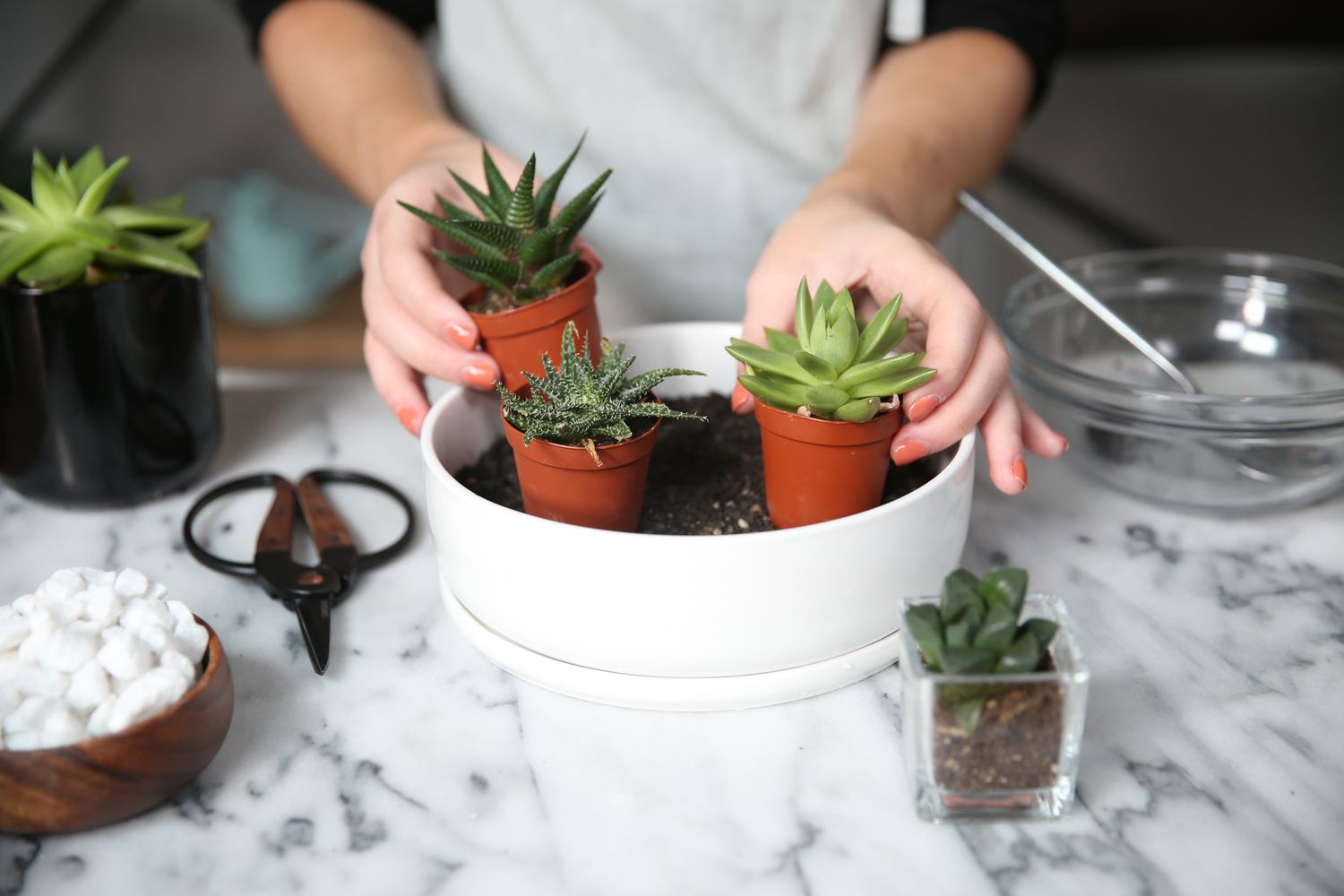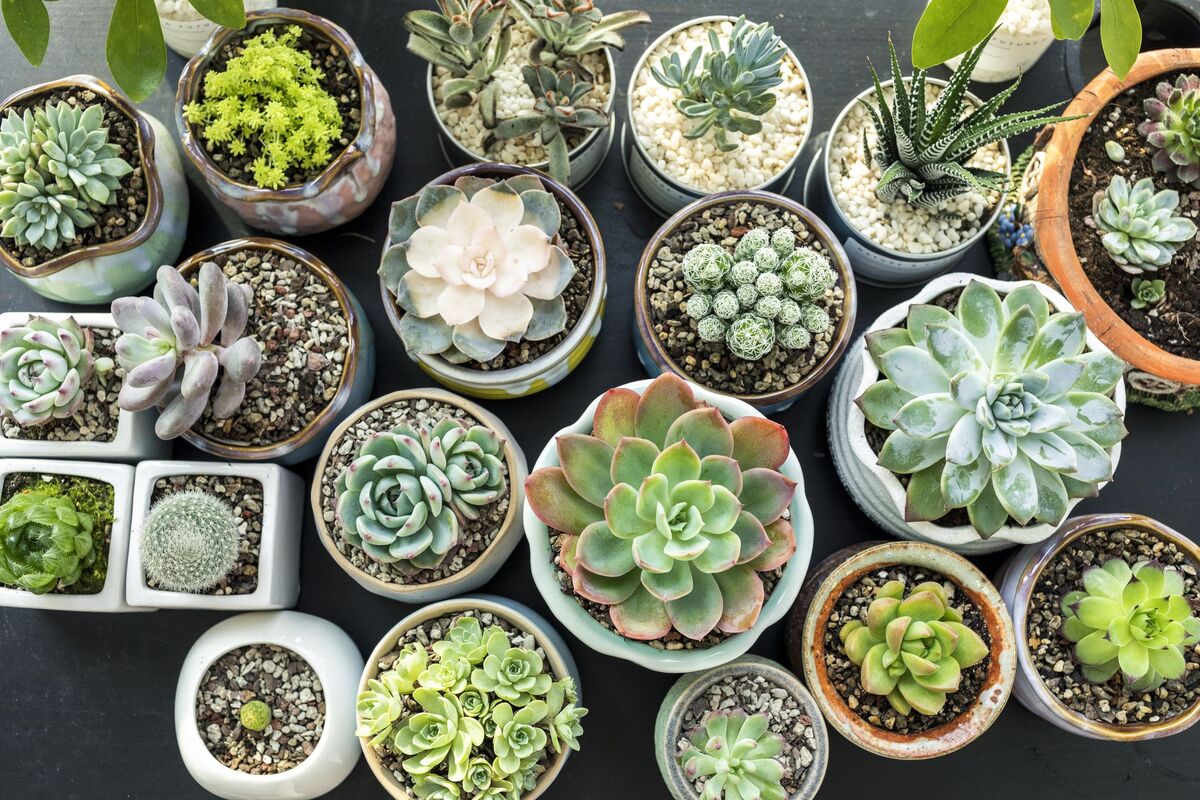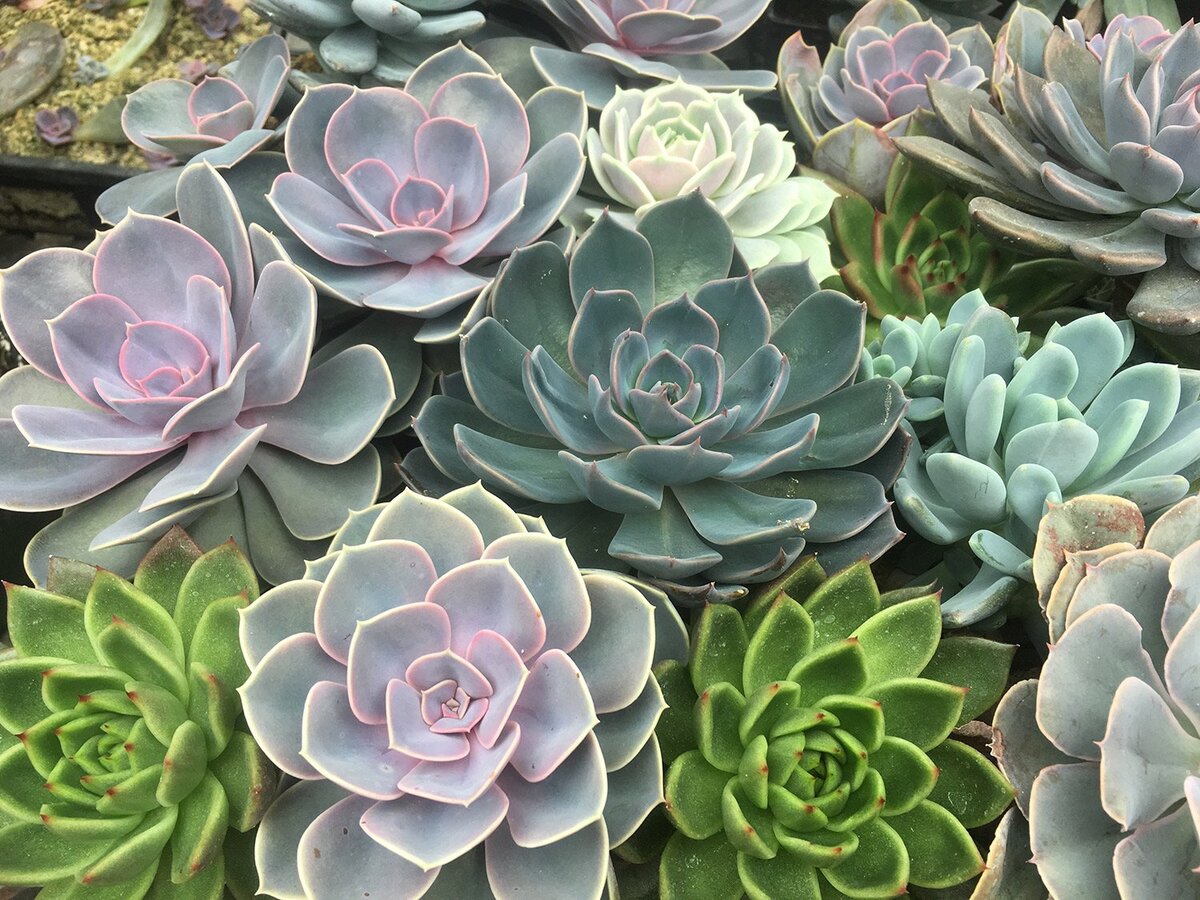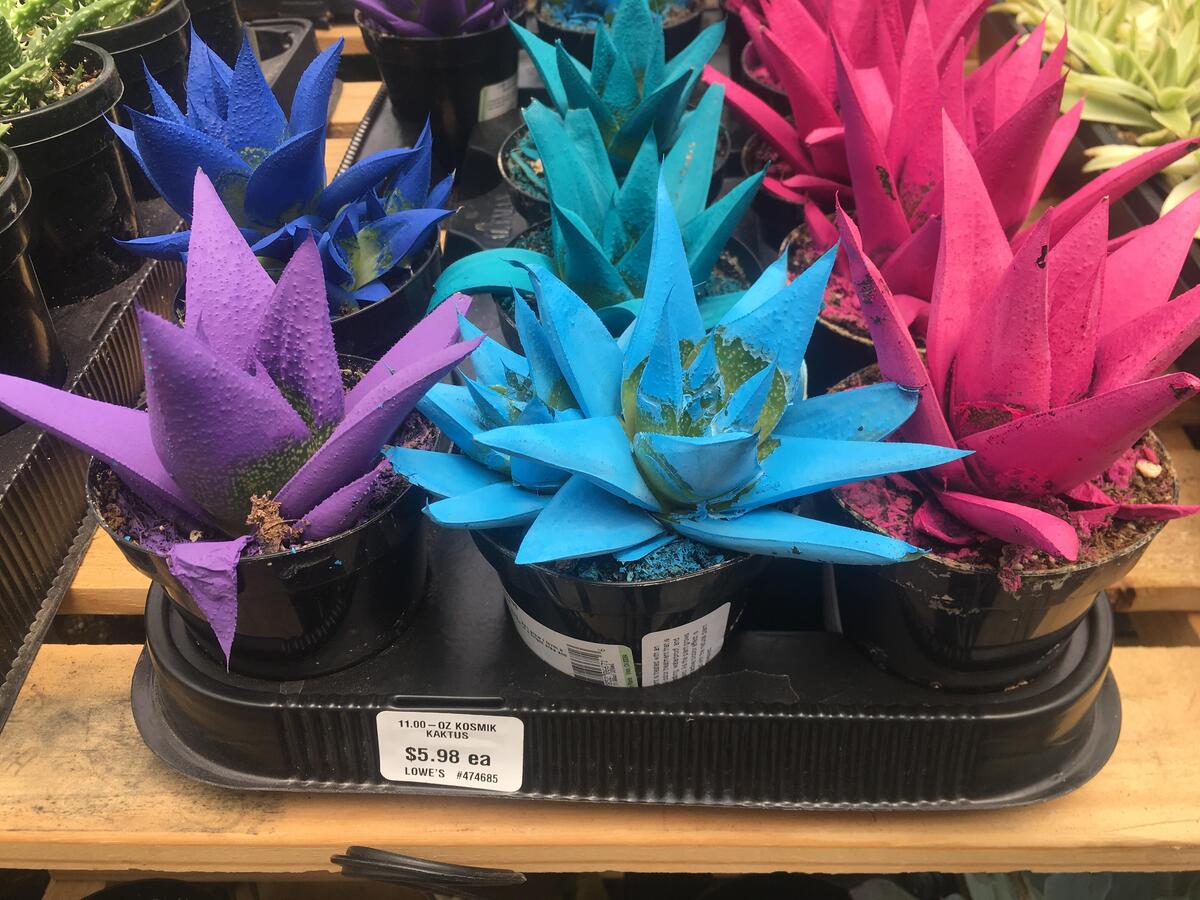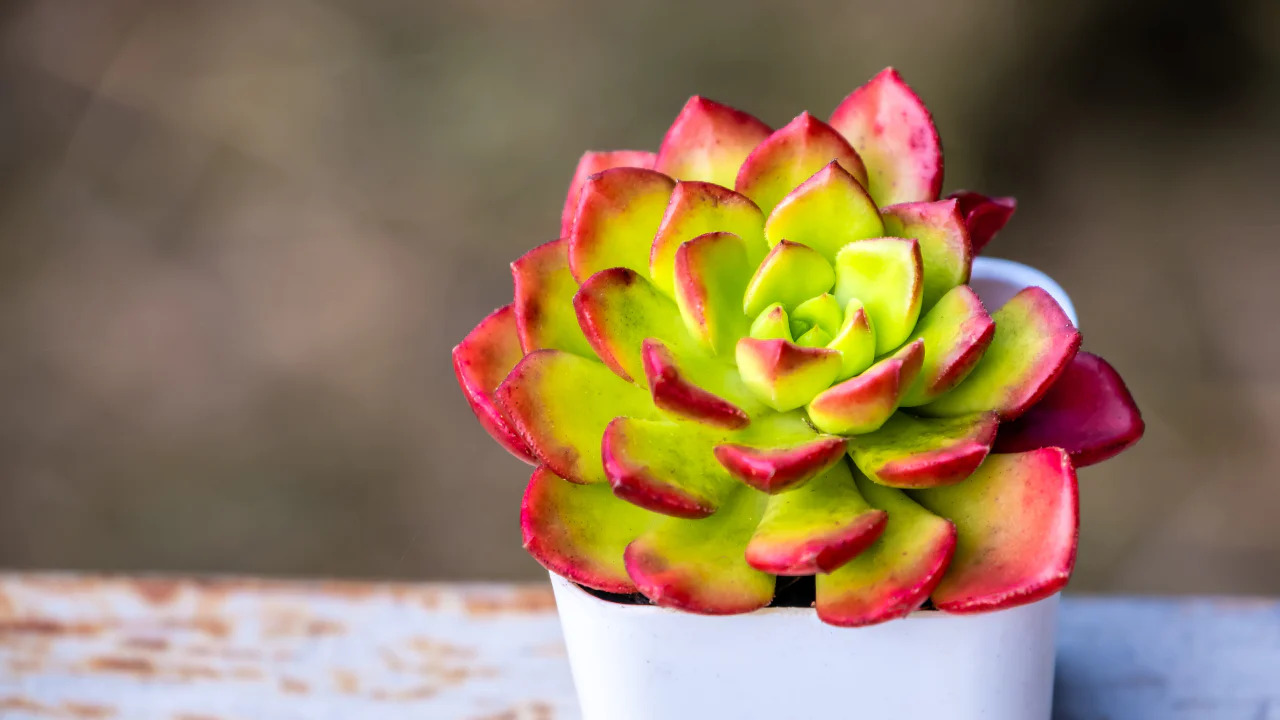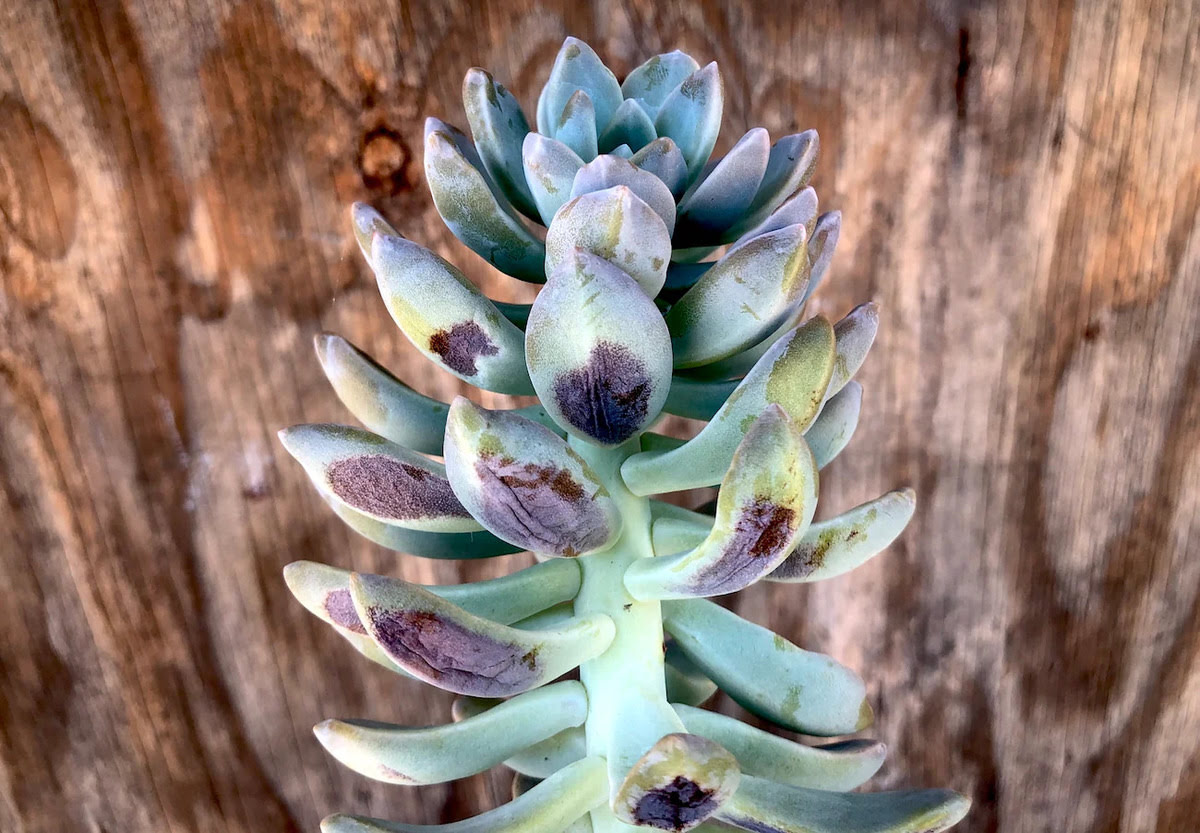Home>Types of Gardening>Ornamental Gardening>How To Plant Succulents?


Ornamental Gardening
How To Plant Succulents?
Modified: January 22, 2024
Learn how to plant succulents with our comprehensive guide on ornamental gardening. Discover the best practices for growing and caring for these low-maintenance, stylish plants.
(Many of the links in this article redirect to a specific reviewed product. Your purchase of these products through affiliate links helps to generate commission for Chicagolandgardening.com, at no extra cost. Learn more)
Table of Contents
**
Introduction
**
Succulents have surged in popularity among plant enthusiasts and gardening aficionados due to their striking appearance and low-maintenance nature. These resilient plants, characterized by their fleshy leaves and stems, have captured the hearts of both novice and seasoned gardeners. Their ability to thrive in arid conditions and diverse shapes and colors make them a versatile addition to any indoor or outdoor space.
Succulents are not only visually appealing but also offer a myriad of benefits, including air purification and stress reduction. Their unique ability to store water in their leaves allows them to withstand extended periods of drought, making them an ideal choice for individuals seeking low-maintenance plants.
In this comprehensive guide, we will delve into the art of planting succulents, from selecting the right species to providing the optimal growing conditions. Whether you are a gardening enthusiast looking to expand your green oasis or a beginner eager to embark on a fulfilling horticultural journey, this article will equip you with the knowledge and confidence to cultivate thriving succulents in your own space. So, roll up your sleeves and get ready to embark on a rewarding and aesthetically pleasing succulent-growing adventure!
Choosing the Right Succulents
Before delving into the planting process, it’s crucial to select the right succulents that align with your preferences, location, and care capabilities. With a vast array of succulent species available, each boasting unique characteristics and requirements, it’s essential to make informed choices to ensure successful growth.
Factors to Consider:
- Light Requirements: Assess the natural light conditions in your intended planting area. Some succulents thrive in full sun, while others prefer partial shade. Understanding the light preferences of your chosen succulents is pivotal for their overall health and vitality.
- Climate Suitability: Consider your local climate when selecting succulents. Certain species are more tolerant of cold temperatures, while others flourish in warm, arid environments. By choosing succulents suited to your climate, you can create an optimal growing environment for these resilient plants.
- Size and Growth Habit: Take into account the mature size and growth habits of the succulents. Some varieties remain compact and are ideal for small containers or terrariums, while others grow tall or spread wide, necessitating ample space for their development.
- Watering Needs: Different succulents have varying water requirements. Some thrive on infrequent watering, while others benefit from more regular moisture. Understanding the watering needs of your chosen succulents is crucial for preventing overwatering or underwatering, which can both be detrimental to their well-being.
Popular Succulent Choices:
For beginners, some recommended succulents include the resilient Echeveria, the low-maintenance Jade Plant (Crassula ovata), and the visually captivating Zebra Plant (Haworthiopsis attenuata). These species are known for their adaptability and forgiving nature, making them excellent choices for those new to succulent cultivation.
By carefully considering these factors and researching specific succulent varieties, you can make informed decisions that align with your gardening goals and environmental conditions. Remember, the right selection of succulents sets the stage for a thriving and visually appealing succulent garden.
Selecting the Right Container
Choosing the appropriate container for your succulents is a pivotal step in creating an optimal growing environment. The right container not only complements the aesthetic appeal of your succulents but also provides essential drainage and space for their roots to flourish. When selecting a container, consider the following factors to ensure the well-being and visual impact of your succulent display.
Factors to Consider:
Drainage: Opt for containers with drainage holes to prevent water from accumulating at the bottom. Proper drainage is crucial for succulents, as it helps prevent root rot and ensures that excess water escapes, mimicking their natural arid habitat.
Material: Containers are available in various materials, including terracotta, ceramic, plastic, and concrete. Each material has distinct advantages. Terracotta allows for breathability and moisture regulation, while plastic containers are lightweight and retain moisture well. Consider the unique needs of your succulents and your personal preferences when selecting the container material.
Size and Depth: Choose a container that accommodates the growth habits of your succulents. Ensure that the container provides ample space for the roots to spread and grow. Additionally, consider the mature size of the succulents to prevent overcrowding as they develop.
Aesthetic Appeal: The visual impact of the container is an important consideration. Select a container that complements the colors and textures of your succulents while aligning with your overall décor. The container should enhance the beauty of the succulents without overshadowing them.
Practical Considerations: Consider the location where the succulents will be placed. If they will be displayed outdoors, ensure that the container is durable and weather-resistant. For indoor arrangements, choose containers that fit seamlessly within the designated space.
Creative Options: Get creative with your container choices. From repurposed teacups and mason jars to driftwood and hypertufa planters, there are numerous unique containers that can add character and charm to your succulent display.
By carefully considering these factors, you can select containers that not only provide a conducive environment for your succulents' growth but also enhance the visual appeal of your indoor or outdoor space. Remember, the right container serves as the foundation for a thriving and aesthetically pleasing succulent arrangement.
Preparing the Soil
The soil in which succulents are planted plays a crucial role in their overall health and growth. Unlike traditional garden plants, succulents require well-draining soil to prevent waterlogged conditions that can lead to root rot. By preparing the soil with the right composition and structure, you can create an optimal growing medium that supports the unique needs of these resilient plants.
Key Considerations for Soil Preparation:
- Drainage: Succulents thrive in soil that allows water to pass through quickly, mimicking the arid environments in which they naturally grow. To enhance drainage, consider adding materials such as perlite, coarse sand, or pumice to the soil mix. These amendments improve aeration and prevent water from pooling around the roots.
- Texture: The ideal soil for succulents is well-aerated and has a loose, gritty texture. A combination of potting soil and mineral components, such as coarse sand or gravel, creates a well-balanced mix that promotes root development and prevents compaction.
- Nutrient Content: While succulents are not heavy feeders, they still benefit from a nutrient-rich soil mix. Incorporating a balanced, low-nitrogen fertilizer into the soil can provide essential nutrients without overwhelming the plants with excessive growth.
- pH Level: Aim for a slightly acidic to neutral pH level in the soil, typically ranging from 6.0 to 7.0. Testing the pH of the soil and making adjustments as needed ensures an environment conducive to healthy root development and nutrient uptake.
DIY Soil Mix Recipe:
For those who prefer a hands-on approach, creating a custom soil mix for succulents is a rewarding endeavor. A simple yet effective recipe involves combining three parts potting soil, two parts coarse sand or perlite, and one part pumice or gravel. This well-draining mix provides the ideal foundation for succulent growth, promoting strong roots and overall vitality.
By meticulously preparing the soil with the right drainage, texture, and nutrient content, you can establish an environment that fosters the thriving growth of your succulents. Remember, the soil serves as the lifeblood of your plants, providing essential support and nourishment for their well-being.
Planting the Succulents
As you embark on the exciting journey of planting succulents, it’s essential to approach the process with care and attention to detail. Proper planting techniques not only ensure the well-being of the succulents but also contribute to the visual harmony of the overall arrangement. Whether you are creating a succulent garden, a terrarium, or a single potted specimen, the following guidelines will help you plant your succulents with precision and finesse.
Step-by-Step Planting Guide:
- Selecting Healthy Plants: Begin by choosing healthy succulents with vibrant foliage and firm stems. Inspect the roots to ensure they are white or light in color, indicating vitality. Avoid plants with signs of damage or disease.
- Preparing the Container: If planting in a container, ensure it has adequate drainage holes. Add a layer of coarse gravel or small stones at the bottom to facilitate drainage and prevent the soil from escaping through the holes.
- Soil Placement: Fill the container with the prepared succulent soil mix, leaving sufficient space for the roots of the plants. Create a gentle slope or mound in the center of the container to accommodate the succulents and allow water to flow away from the stems.
- Arranging the Succulents: Before planting, arrange the succulents on the soil to visualize the desired composition. Consider the colors, textures, and growth habits of the plants to create an aesthetically pleasing arrangement. Leave ample space between the succulents to allow for growth and airflow.
- Planting Technique: Gently remove the succulents from their nursery containers and loosen the soil around the roots. Place each succulent on the prepared soil, ensuring the roots are spread out and positioned evenly. Lightly pack the soil around the base of each plant to provide stability.
- Aftercare: After planting, refrain from watering the succulents immediately. Allow the plants to acclimate to their new environment for a few days before providing a light watering. This allows any root disturbances to heal and reduces the risk of rot.
By following these steps and exercising patience and precision, you can plant your succulents with confidence, setting the stage for their healthy establishment and growth. Remember, the planting process is an opportunity to express your creativity and appreciation for these remarkable plants, resulting in a captivating and thriving succulent display.
Caring for Succulents
Once your succulents are planted, providing appropriate care is essential for their long-term health and vitality. While these resilient plants are known for their ability to thrive in challenging conditions, they still require attention to ensure optimal growth and visual appeal. By implementing the following care practices, you can foster a flourishing succulent garden or display, enriching your living space with natural beauty and tranquility.
Light and Temperature: Position your succulents in a location that receives ample sunlight, such as a south-facing window for indoor plants or a sunny outdoor spot. Monitor the exposure to prevent sunburn, especially for species that prefer partial shade. Additionally, ensure that the temperature remains within the suitable range for your specific succulent varieties, protecting them from extreme heat or cold.
Watering: Succulents are adapted to arid environments and have low water requirements. Allow the soil to dry out completely between waterings to prevent root rot. When watering, apply water directly to the soil, avoiding wetting the leaves. Adjust your watering frequency based on the season and environmental conditions, reducing water during the dormant winter period.
Soil Maintenance: Regularly inspect the soil to ensure it remains well-draining and aerated. If the soil becomes compacted over time, gently loosen it to promote airflow and prevent waterlogged conditions. Consider refreshing the soil mix every few years to replenish nutrients and maintain an optimal growing medium.
Fertilization: While succulents are not heavy feeders, they can benefit from occasional fertilization during the growing season. Use a balanced, diluted fertilizer specifically formulated for succulents, applying it sparingly to avoid overstimulating growth. Fertilize less frequently or refrain from fertilizing altogether during the dormant winter months.
Pest and Disease Management: Monitor your succulents for signs of pests, such as aphids or mealybugs, and promptly address any infestations. Additionally, be vigilant for symptoms of fungal or bacterial diseases, such as rot or mold, and take preventive measures, such as improving air circulation, to mitigate these risks.
Pruning and Maintenance: Remove any dead or withered leaves to maintain the visual appeal of the succulents and prevent potential disease spread. Prune overgrown or leggy growth to encourage a compact and balanced appearance, promoting the overall health of the plants.
By attentively caring for your succulents and addressing their specific needs, you can cultivate a stunning and resilient display that brings joy and serenity to your surroundings. Embrace the rewarding experience of nurturing these captivating plants, and revel in the natural beauty they bring to your indoor and outdoor spaces.
Conclusion
Embarking on the journey of planting and caring for succulents is a gratifying endeavor that offers a myriad of rewards. From their captivating aesthetics to their remarkable resilience, succulents have captured the hearts of gardening enthusiasts and nature lovers alike. As you immerse yourself in the art of succulent cultivation, remember that each step, from selecting the right plants to providing attentive care, contributes to the flourishing beauty of your succulent display.
By carefully choosing succulents that align with your environment and preferences, selecting suitable containers, and preparing well-draining soil, you lay the groundwork for their thriving growth. The meticulous process of planting succulents, from arranging them thoughtfully to ensuring their acclimation, sets the stage for a visually stunning and harmonious display.
As you care for your succulents, tending to their light, water, and nutritional needs, you witness the resilience and adaptability of these exceptional plants. The act of nurturing succulents not only enriches your living space with natural elegance but also instills a sense of tranquility and connection to the natural world.
Remember, the journey of succulent cultivation is a continual learning experience, offering opportunities for creativity, mindfulness, and appreciation of the wonders of nature. Whether you are cultivating a small succulent garden or adorning your living space with potted specimens, the presence of these remarkable plants enriches your surroundings and brings a sense of calm and beauty to your everyday life.
As you revel in the captivating allure of succulents and the joy they bring, may your horticultural journey be filled with growth, creativity, and the enduring splendor of these extraordinary plants.
